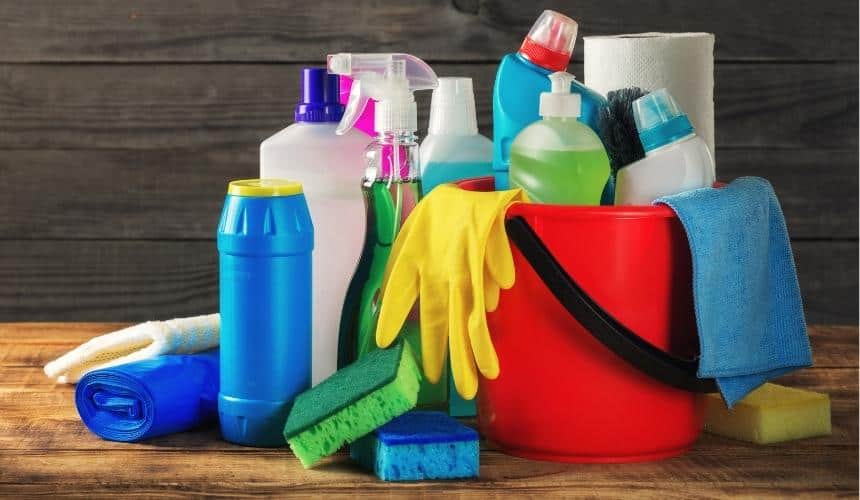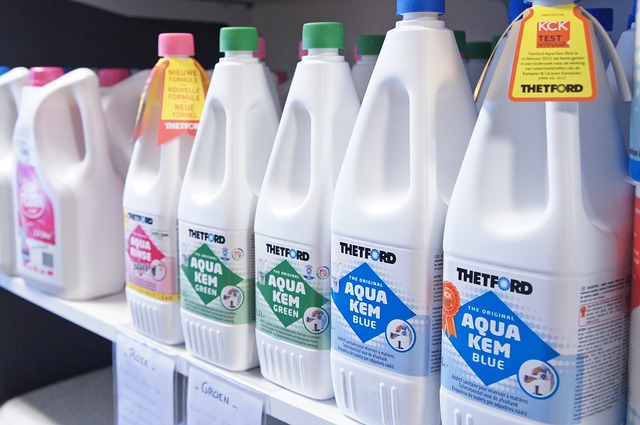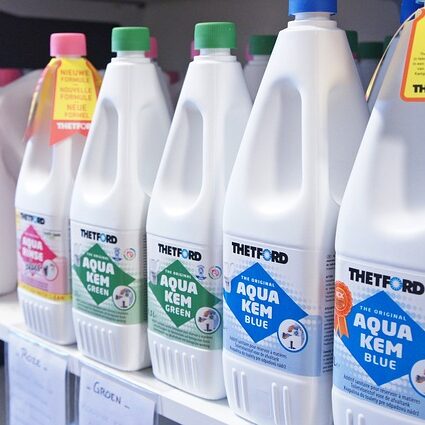Portable Toilet Chemicals: How to Choose the Right One
The correct setup and use of your portable camp toilet can make all the difference in whether it works as expected. The chemicals you use are essential for maintaining its functionality, so choose wisely!
There are a lot of different chemicals that can be used in your camping toilet, but it’s important to think about what type you plan on using and how often. Some people who camp may only use their toilet when they go off-grid for an extended time, while others might use them every day.
When I first started looking into chemical toilets on the market, I was overwhelmed.
After taking the time to understand each one and its role, there is an underlying logic behind them all. It isn’t difficult to comprehend them all once you’ve taken the time to understand each one and its purpose.
Why Clean Portable Toilets
In addition to its aesthetic benefits, a clean portable toilet is essential for the appearance and keep smells under control during your camping trip. It’s also critical to prevent disease transmission; portable toilets may quickly get filthy and contaminated without regular cleaning.
Hygiene is not just crucial now, but it will be even more so in the future. Hygiene becomes doubly important in homes and communities, including mobile homes such as caravans. When houses and communities are cleaned, family members and community members are healthy, enjoy longevity.
A clean portable camping toilet is the first major step towards a safe environment when camping or caravanning. The objective: to remove, store, and neutralise odours from the toilet waste effectively and correctly.
Therefore, portable toilet cleaning solutions are required, from deodorisers to chemicals that keep the inside clean, remove waste, combat smells, and build a tidy appealing environment.
The toilet chemicals, which range from liquids to discs, all have the same goal in mind: to deliver a longer-lasting scent.

How Does a Portable Chemical Toilet Work?
Toilets have many different levers in various places, but the process of opening and cleaning are all the same.
Do I require chemicals for my portable toilet? Yes, you do. Even if your caravan toilet has an enormous tank built into your camper van, you will still need chemicals to cleanse the toilet waste. Because the waste tank of portable camping toilets is located under the seat, it is conveniently accessible to clean.
The Waste tank
The waste tank on a portable toilet is essential for the function. It uses chemicals to break down and treat the waste, which also helps with emptying. You won’t have any smells or build-up when you use chemicals because they treat and eliminate odours.
The tanks have different capacities, and unless the tank is visible, the user will need to keep track of when it needs to be emptied.
It’s critical to close the sliding valve between the tank and the bowl before emptying the tank. The tank won’t disconnect if the valve is open. Remove the cap on the end of the tank with a screwdriver. Turn it first if your toilet has a rotating spout before removing the screw cap.
Chemicals must be poured into the waste storage tank before it is first used and afterwards every time it is filled. They may also be added via the draining spout on the top of the tank or by opening the waste valve on top.
Toss the liquid chemical or drop-in tablets as directed on their labels. Water should also be added to the tank when the chemical is added. Never put in the chemicals when the tank is dry; always add water with the chemicals.
The Freshwater Tank
Rinsing chemicals are added to the fresh water tank to coat it and protect both your bowl and those seals from wear. They also help keep things clean by providing a layer of protection for any dirt or oil that may accumulate on them over time.
What Chemicals Do I Need For My Portable Toilet?
Chemical toilet tanks are made of two components, a top tank that aids in the flushing of waste from the bowl and a bottom tank where waste is stored and diluted.
Top Tank (Flush Tank)
Since the top tank is used to distribute water into the inside of the toilet and wash waste down, you don’t need a chemical in there. You can use untreated water to fill your tank, and it will likely be ok.
Pink Toilet Chemicals
Some people put a pink aqua rinse chemical in their top tank. This chemical is supposed to help with a smoother flush by producing a smooth protective layer that prevents toilet build-up and germs from accumulating.
It also keeps your toilet’s plastic and seals clean, preventing things from drying out while leaving a pleasant smell to combat the waste smell.
Many of the pink products can be washed down your domestic septic system.
Although the pink top tank chemical is not necessary, it is strongly advised because of its long-term benefits and pleasant scent. However, don’t worry if you run out for a few days and can’t get any more.
Bottom Tank (Storage Tank)
The waste that washes into the bottom tank needs a chemical to work well. The chemicals come in different strengths and you need to decide which one is best for you.
There are two types of chemicals, both of which have different biodegradability levels and how long they stay in the tank before needing to be emptied.
Blue Toilet Chemicals
The blue chemicals are the most effective since they efficiently break down waste and have a long “tank life.” You won’t have to empty the tank very often unless it gets full. It does an outstanding job; however, because it is not environmentally friendly, you will always have to empty it into a suitable waste disposal site.

Green Toilet Chemicals
The green toilet chemicals work the same way as the blue toilet chemicals, but they are biodegradable. This means that they break down waste and help with smells. They can be poured into your septic tank.
The green cassette chemical does not last as long as the blue one. This means that you will have to empty it more often – typically 3-4 days.
Additional Tips to Keep Your Portable Toilet Clean
It’s upon you to keep your portable toilet clean and smelling decent, not only for your benefit but for any other people around.
Here are five easy ways to maintain your portable toilets while camping or on the move.
- Use your portable toilet chemicals right. Every two weeks, throw a deodorising tablet or sachet into the waste storage tank to freshen it up and prevent any aroma from forming. The scent will also be a pleasant surprise for any user.
- Promote air circulation. Allow your portable toilet to breathe. Leave the door open for some time after cleaning the unit and the bathroom. This will get rid of stale odours while also drying out the interior.
- Keep sanitary products close. Keep toilet paper, soap, hand sanitiser, and paper towels on hand.
- Empty the trash bin regularly. Make sure to empty your toilet garbage bin every week or more often, just like a standard bathroom rubbish bin.
- Remove all unwanted dirt. Don’t let grime accumulate in your portable toilet unit for an extended period of time. Using an all-around cleaner to remove mildew and other undesired components
How to Care for Your Toilet When Not in Use
When you’re not going to use the toilet, it must be emptied. The last thing you want is to have waste sitting for any unused time.
After emptying the waste and water tanks, give them a thorough cleaning and then dry before reassembling. To assist with odour control, you may add a small amount of deodorant and water to the garbage tank.
When not in use, be sure to empty the water tank not to freeze and cause damage.

